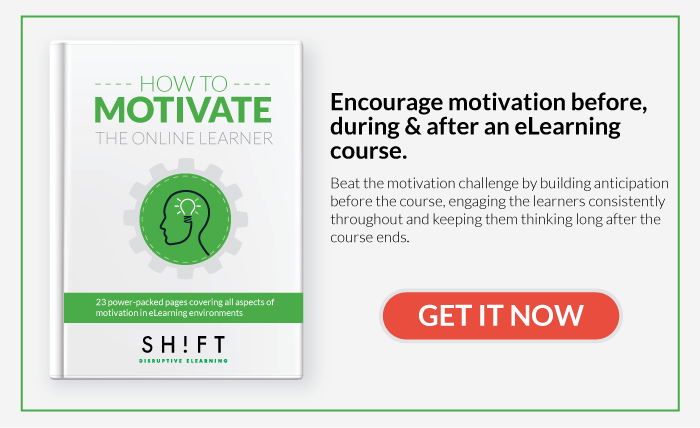In the realm of eLearning, there's a crucial truth that often gets overlooked: Learning that doesn't align with business needs rarely delivers real value. The cornerstone of creating learning experiences that drive business performance is an upfront investment in understanding three key elements: the learner, the specific business need, and the problem that needs solving. This article is here to guide you through three practical tips to achieve just that.
Consider this compelling insight from MIT Sloan research: one in four Fortune 500 CEOs are voicing concerns about the quality of learning available to their talent. The crux of their worry? The learning content isn't aligned with their business needs. It's a significant issue, as the gap between what is being taught and what needs to be learned can hinder not just individual performance, but also the overall trajectory of the company.
In this context, it's imperative to recalibrate our approach to eLearning. It's not just about providing information or skills in isolation. Instead, it's about crafting learning experiences that are deeply intertwined with the strategic objectives and challenges of the business. This alignment is not just a nice-to-have; it's a must-have for companies looking to thrive in today's competitive landscape.
So, whether you're a seasoned eLearning professional or just starting out, remember: the true impact of your courses lies in their relevance to the business goals and challenges they are meant to address.
Let's delve into the essential steps you should take to ensure that your eLearning initiatives are not just informative, but transformative and closely aligned with your business's needs.
Step 1: Carry out a Training Needs Analysis first
Alright, let's dive into Step 1 and make it super actionable and easy to grasp. We're talking about carrying out a Training Needs Analysis (TNA), but let's break it down into real-world terms.
Think of TNA as your eLearning GPS. It's your first, crucial step to designing courses that don't just look good on paper, but actually drive your business goals forward. (And trust me, you don’t want to skip this part – here’s why.) It's all about balancing what your organization aims to achieve and what your employees really need in terms of skills and knowledge.
Now, let's get into what you need to dig up during your analysis:
-
Competency Requirements: Imagine your business goal is to reduce production costs to stay competitive. You need to figure out what skills your team needs to achieve this. Maybe they need to be wizards at identifying production glitches or pros at cutting down waste. This is where your training comes in, giving them the tools to develop these skills. But hey, here's a heads-up: Sometimes, the issue isn’t about skills at all. For example, if outdated machinery is the culprit for inefficiencies, skip the training and consider updating your equipment.
-
Organizational Context: This is the big picture stuff, directly stemming from your company’s goals. What's the company aiming to achieve in the next year or five? Understanding this context is like having a compass that guides your training design.
-
Target Audience Identification: It’s not just about what skills to teach, but also who needs to learn them. Once you know the competencies to develop, pinpoint which groups in your workforce match up or need these skills the most. For instance, if reducing waste is the goal, your assembly-line workers might need hands-on training, while your production managers might benefit more from strategic-level best practices training.
Also read: Reasons on why you shouldn’t skip the Training Needs Analysis
Step 2: Create SMART objectives that embody ACTION and IMPACT
So, you've got your insights from the Training Needs Analysis, right? These are your gold nuggets for shaping the course objectives – think of them as your course’s GPS coordinates.
Now, let’s break down SMART:
-
Specific: Your objectives need to be crystal clear. Instead of something vague like “Become more productive,” zero in on something concrete, like “Operate a drilling machine with 95% accuracy.”
-
Measurable: You need to see tangible results. Swap “Generate more leads” for something you can count, like “Generate 5,000 leads in 2 months.”
-
Achievable: Keep it within reach. Make sure your objectives are doable, considering your learners’ current skills and the realistic time they’ll need to level up.
-
Realistic: Align those objectives with your business goals. They need to make sense in the grand scheme of things.
-
Time-bound: Give your learners a finish line. A timeframe keeps them motivated and on track, like “Master advanced Excel functions in 4 weeks.
Now, why are SMART objectives so crucial? Here's the scoop:
-
They help you filter what content makes it into your course – and what doesn't.
-
They allow you to craft focused, goal-driven courses.
-
They give your learners a clear purpose and motivation.
-
They make it easier to get buy-in from managers by showing how the course aligns with business goals.
And here’s the real kicker – the golden rules of writing SMART objectives:
-
Behavior Alignment: The secret sauce to specific and measurable objectives. Figure out what actions (behaviors) your learners will need to perform back on the job. Use these insights to craft objectives that mirror these real-world actions. Choose verbs that scream measurability – think “build,” “calculate,” “assemble,” “diagnose” – rather than vague ones like “understand” or “appreciate.”
-
Focus on Action: Don’t just throw text, images, and videos at your learners and call it a day. They want to feel the impact of their learning, to take action based on what they’ve absorbed. So, design your course as a series of engaging activities that let them apply what they’ve learned.
Step 3: Design with "application" in mind
Alright, let's dive into Step 3: Designing with "application" in mind. This is where we bridge the gap between learning and doing.
Here's a stat that might surprise you: Studies, like those by Brinkerhoff, show that only about one in six learners successfully apply what they've learned in training to their work. Now, think about the other five. Despite going through eLearning courses, they're still making the same old mistakes or not applying the latest best practices.
All your hard work in designing those courses? It risks going down the drain.
It's pretty frustrating, right? You pour your heart and soul into these courses, and then you find out that for many learners, it's just another checkbox on their to-do list or a shiny new line on their résumé.
But here's where you can turn things around. Your mission is to create courses that not only teach but also show learners exactly how they can use what they're learning in real-life situations.
Here are some actionable tips to get you there:
-
Targeted Training: Be super clear about who needs what training. Match specific sections of a course to the right groups. This is all about making the material as relevant as possible to each learner.
-
Purposeful Content: At the beginning of each activity or new section, lay out plainly how this is going to help learners improve or learn new on-the-job behaviors. It’s like giving them a "why" for every "what."
-
Consistent Reinforcement: Keep linking back to how each learning objective ties in with your organizational goals. It's like connecting the dots for your learners throughout the course, showing them the bigger picture.
-
Real-World Focus: Design your content with the workplace in mind. Think scenarios, case studies, and simulations that mirror the challenges they face on the job.
About one in six learners successfully apply to their work the knowledge they have acquired during the training.
Step 4: Keep the C-Suite in the loop
So, you're gearing up to design an eLearning course, right? Here's a pro tip: Make a beeline for your company's top brass – the C-suite execs. Why? Because these folks hold the key to understanding your organization's goals, and trust me, your eLearning course needs to be tight with these goals.
Now, let's talk about keeping the C-suite in the loop when planning your course. Here's what you stand to gain:
-
Insider Business Insights: The top executives can give you the lowdown on what's really cooking in terms of business priorities. Armed with this intel, you can craft courses that are not just credible but also bang on target with what the business needs.
-
Leadership-Focused Programs: If you're whipping up programs for senior management or courses that polish leadership skills, there's no better resource than the C-suite crew. They've been through the grinder and have stories and advice that can turn a good course into a great one. Plus, when senior managers are visibly backing learning initiatives, guess what? The reach and impact of your programs skyrocket.
-
Fostering a Learning Culture: Here's the big win – involving top executives in your training programs can lay the foundation for a strong learning culture in the organization. And when that happens, it's a win-win for everyone in the company, from the intern to the CEO.
Step 5: Design for Continuous Learning
Learning – it’s not just a one-time event. It's like a journey, not just a single stop. It doesn’t just start when learners log into your course or step into a training room. And guess what? It doesn’t end when they log out or leave, either. Learning is an ongoing adventure because, let’s face it, your company is always growing and evolving.
To really nail those learning outcomes, you’ve got to think about the whole package: before, during, and after the training. Picture the entire training experience as a journey, where each part is as crucial as the next.
Here are some actionable tips to make this learning journey enjoyable and memorable:
-
Build Anticipation: Get your learners excited even before the training starts. How? By showing them why this training matters. The more they look forward to the course, the more open they'll be to absorbing new ideas and changing their ways. Think teaser videos, intriguing posters – anything that sparks curiosity.
-
Reinforce Learning Post-Training: This is huge. Why do some eLearning courses fall flat? Often, it's because there’s no follow-up. Don't let that be you. Plan for post-training activities that reinforce what was learned. How about mini-lessons sent right to their phones, or quick activities they can do on the fly? Studies show that repetition is key to really locking in new knowledge.
So, ready to think of employee training as more than just a 'one-and-done'? Let’s create a learning journey that’s ongoing, engaging, and truly effective!
Also read: Learning Is Not a One-Time Event! Promote Continuous Learning
So, what's the endgame of your eLearning program? It's all about building and nurturing a talent pool that's not just skilled, but a real game-changer for your company.
Your training programs are the tools that equip your employees to excel in their roles, to really shine in what they do at work.
Remember, the best corporate training programs are those that act like a mirror to the real world of work – they reflect the nitty-gritty of the workplace, which is always evolving with the business environment and market dynamics. This means your training has to be more than just educational; it needs to be a dynamic, living part of your business, changing as your business changes.
Your role? It's crucial. You're the architect of these learning experiences, designing training that doesn't just tick boxes, but actively propels your company towards its broader goals. Think of it this way: every course you create, every module you design, is a step towards aligning individual talents with the company's aspirations.
REFERENCES:
Learning Eye to Eye: Aligning Training To Business Objectives https://www.td.org/Publications/Magazines/TD/TD-Archive/2009/04/Learning-Eye-to-Eye-Aligning-Training-to-Business-Objectives
Are Your Learning Activities Aligned With the Business? http://www.clomedia.com/2012/08/29/are-your-learning-activities-aligned-with-the-business/
Aligning Corporate Learning With Strategy https://sloanreview.mit.edu/article/aligning-corporate-learning-with-strategy/
Maximize Training Impact by Aligning Learning with Business Goals
Focus: Learning transfer. On-the-job application is our goal.



